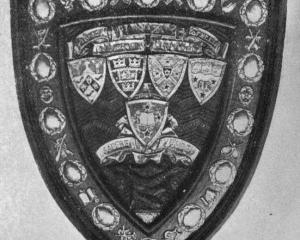
Admiral of the Fleet Lord Jellicoe, in unveiling the memorial stone and dedicating the memorial oaks at Oamaru last week, expressed the opinion that the conception and whole scheme, including the planting of trees commemorative of the men from Waitaki Council, who had fallen in the war, as mile-posts throughout the county were absolutely ideal for a memorial. The committee, which had undertaken the execution of the scheme, has satisfied itself, after careful investigation, involving much labour, that not a single name of a fallen soldier from the district has been omitted and thus that every individual man will have his memory kept green for all time.
As many as 130 oak trees have been planted at the north and south approaches to the town of Oamaru. Each tree is surrounded by an iron guard, bearing a small brass plate, with the name of an individual soldier from the town of Oamaru who fell in the war. The labour of digging the holes out of the clay, 6ft wide and 3ft deep, and filling them with good soil, was largely done by voluntary labour provided by citizens and pupils of the Waitaki High School. The tree-guards were painted by Oamaru women. The trees are 20 yards apart and at the south approach to Oamaru radiate from a central point where five roads meet. At this central point are two conspicuous trees, one bearing the inscription plate for Donald Forrester Brown, V.C., and the other the inscription plate for Nurse Clark, who was drowned in the Marquette disaster.
Long-serving chaplain returns
The Rev. J. A. Luxford, who has seen close on five years' service abroad as chaplain to the New Zealand Expeditionary Forces, returned to New Zealand last week. Mr Luxford saw service in the South African war, and his record in the war dates from October, 1914, in which month he left New Zealand with the Main Body. After service on the Suez Canal he left for Gallipoli, and took part in the landing. On August 9, 1915, he was wounded at Chunuk Bair, being shot in the leg by a sniper. This necessitated his removal to hospital in Egypt, where his leg was amputated.
Narcissi bulbs in demand
The well-known daffodil grower, Mr E. A. Hamel, referring to a paragraph which appeared in Saturday's issue of the Otago Daily Times, informed a Times reporter that there was apparently a considerable demand for narcissi bulbs. He had recently been asked to give a quotation for named varieties, to be supplied in hundred-weight lots. Mr Hamel was of opinion that quite a large trade would eventually be developed in narcissi bulbs, as far as Otago was concerned.
Monotony problem for prisoners
"One of the worst features of prison life in this country is its deadly monotony," said the Rev. E. C. Budd. "The men have hours of idleness upon their hands, and if they do not care for reading there is nothing for them to do save to brood and think their own hard thoughts.
An effort has been made in the direction of introducing the system at the Auckland gaol, and it could be greatly developed."
- ODT, 15.9.1919.












